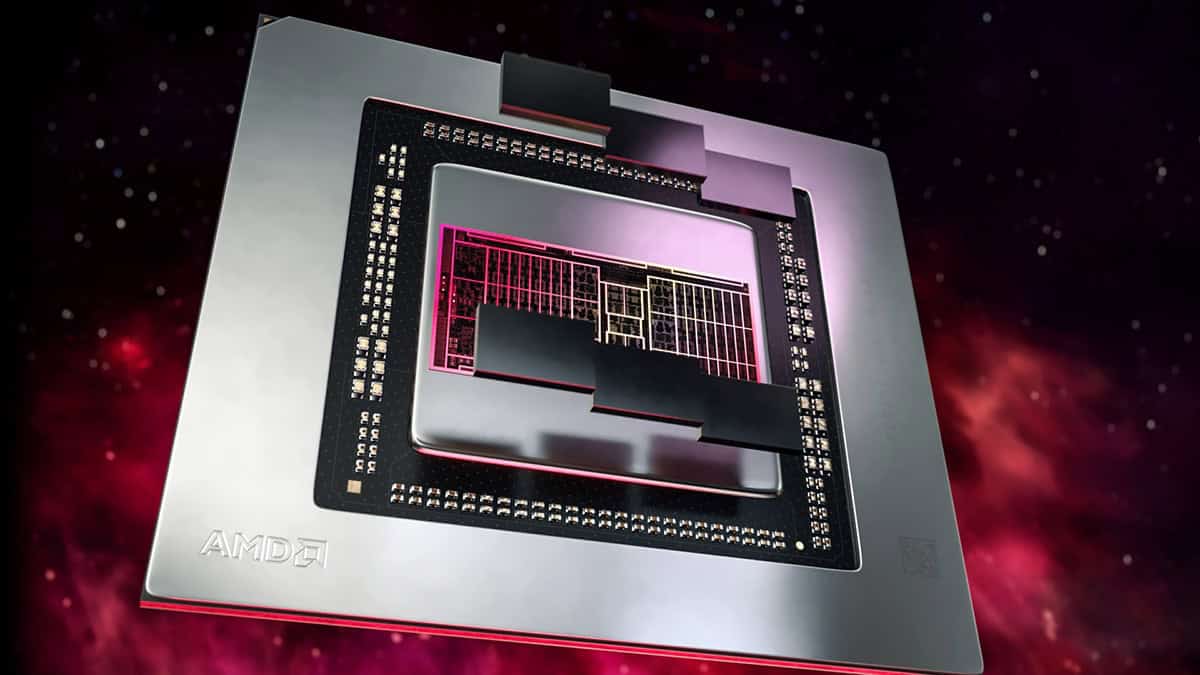AMD’s RDNA 4 graphics cards bring faster performance, smarter AI capabilities, and more memory for smoother gaming and better productivity. These updates help deliver higher frame rates and improve image quality, making everyday use and heavy workloads feel more responsive. The new lineup targets both gamers and creators with changes to compute units and ray tracing.
The RDNA 4 architecture also introduces improved AI processing and media features. Users will notice better upscaling and rendering, mainly because of new AI features and more efficient memory bandwidth. With up to 16GB of memory on some models, larger games and creative tasks will run better on these GPUs. For those interested in details, the changes in compute units and ray tracing stand out as key upgrades for this generation according to reports from Tom’s Hardware and Igor’s Lab.
Whether gaming or working with demanding software, RDNA 4 aims to make graphics smoother, faster, and more efficient. Its focus on AI and higher memory caps should help users keep up with modern software needs.
RDNA 4 Architecture: What’s New Under the Hood
AMD’s RDNA 4 architecture marks a pivotal leap for Radeon graphics. Built on TSMC’s advanced 4nm N4P process, RDNA 4 delivers faster performance per watt, expanded memory support, and a greater focus on AI acceleration and ray tracing.
At the heart of RDNA 4 is the Navi 48 GPU die, powering the first wave of cards like the RX 9070 and RX 9070 XT. AMD has streamlined its Compute Units (CUs) and refined its chiplet-based architecture for more efficient workload distribution.
Key architectural improvements:
- Upgraded AI matrix cores for better support in generative workloads and upscaling
- New wavefront schedulers designed to reduce latency in shader processing
- Third-generation ray tracing accelerators for smoother real-time lighting and reflections
- Higher bandwidth memory controller for improved 4K performance
Radeon RX 9070 vs RX 9070 XT: Specs Comparison
| Feature | Radeon RX 9070 | Radeon RX 9070 XT |
|---|---|---|
| Compute Units | 56 | 64 |
| Stream Processors | 3584 | 4096 |
| Memory | 16GB GDDR6 | 16GB GDDR6 |
| Memory Bus | 256-bit | 256-bit |
| Boost Clock (GHz) | 2.5 | 2.7 |
| FP32 Compute (TFLOPS) | 36.1 | 48.7 |
| TDP | 245W | 265W |
| MSRP | $549 | $599 |
| Launch Date | March 6, 2025 | March 6, 2025 |
These two cards are squarely aimed at 1440p and 4K gamers who want next-gen features without shelling out over $1,000. In AMD’s internal benchmarks, the RX 9070 XT outpaces the previous-gen RX 7900 XT by up to 22% in modern AAA titles when paired with FSR 4.
AI Workloads and FidelityFX Super Resolution 4
A major highlight of RDNA 4 is its expanded AI acceleration. The AI matrix cores now support operations beyond inference, including real-time upscaling, dynamic resolution adjustment, and motion interpolation.
AMD’s FidelityFX Super Resolution 4 (FSR 4) taps directly into these AI cores, producing sharper, cleaner images with less artifacting—even in fast-paced action games. FSR 4 works across multiple platforms and doesn’t require proprietary hardware, which gives AMD an advantage over more locked-in solutions.
Benefits of FSR 4:
- AI-enhanced temporal anti-aliasing
- Superior image clarity compared to FSR 3
- Minimal input lag, ideal for competitive gaming
- Expanded compatibility with previous-gen cards (FSR 4 support coming to RDNA 3)
Display Support and Connectivity
RDNA 4 GPUs support the latest in display technologies to future-proof your setup.
- PCIe 5.0: Greater bandwidth for high-speed workloads
- DisplayPort 2.1a: Up to 4K at 480Hz or 8K at 165Hz
- HDMI 2.1b: Full compatibility with modern TVs and monitors
- AV1 Hardware Encoding: Faster, higher-quality streaming and video capture
These features position RDNA 4 cards not just for gaming, but also for creators and streamers who need flexible I/O and robust media encoding.
RDNA 4 Performance Benchmarks
In early independent benchmarks, the RX 9070 XT shows strong gains over the RX 7900 XT and even competes with NVIDIA’s RTX 5070 Ti in rasterized workloads.
| Game (4K Ultra, FSR 4 On) | RX 7900 XT (fps) | RX 9070 XT (fps) | RTX 5070 Ti (fps) |
|---|---|---|---|
| Cyberpunk 2077 | 58 | 71 | 67 |
| Alan Wake 2 | 53 | 65 | 66 |
| Starfield | 64 | 78 | 76 |
| Call of Duty: MW3 | 142 | 169 | 162 |
The RX 9070 XT leads in AMD-optimized titles and holds its ground in most others. While ray tracing still favors NVIDIA slightly, AMD has closed much of the gap this generation.
What’s Next: Radeon RX 9060 XT and Beyond
AMD isn’t stopping with the RX 9070 series. A Radeon RX 9060 XT is expected to debut at Computex 2025, targeting 1080p and 1440p gamers with a price point under $400. It’s rumored to carry 12GB of VRAM and a cut-down version of the Navi 48 die.
Additionally, workstation-class RDNA 4 GPUs—under the Radeon Pro W9000 name—are in development with up to 32GB of VRAM, optimized for creative workloads, 3D rendering, and AI model development. These will compete directly with NVIDIA’s RTX 6000 Blackwell GPUs.
Key Takeaways
- RDNA 4 improves GPU speed, AI, and memory.
- New features offer better gaming and productivity.
- The design focuses on practical everyday use.
Inside RDNA 4 Architecture: A Leap in Graphics Performance
AMD RDNA 4 brings new advances in chip design, memory configuration, and compute efficiency. The architecture aims to deliver faster graphics, better AI features, and improved performance per watt for PC gaming and professional work.
GPU Design Innovations
AMD has redesigned the RDNA 4 GPU architecture for higher speed and lower power usage. The new RX 9070 XT and RX 9070 use a split-chip, or chiplet, approach. Instead of a monolithic design, AMD uses separate graphics compute dies (GCD) and memory cache dies (MCD). This approach allows for better scaling, cheaper manufacturing, and improved yields from chip foundries like TSMC.
The chiplet layout helps organize core functions more efficiently, letting AMD reach higher boost and game clock speeds without increasing total board power. With this change, design improvements target both workflow and gaming experiences. Enhanced L2 cache layers cut response times and provide more stable performance, especially during demanding workloads.
Enhanced Compute Power and Efficiency
RDNA 4 boosts compute unit count and stream processors compared to earlier Radeon graphics cards. This results in faster frame rates, reduced game load times, and higher benchmark scores. Early tests show significant performance gains over previous generations, thanks to parallel processing and concurrency improvements.
Power management is more advanced in these cards, leading to better frames-per-watt even at high clock speeds. The RX 9000 Series GPUs, including the RX 9070 XT and RX 9070, feature refined clock control for smoother operation. AMD’s RDNA 4 optimizes for fast performance without large jumps in total board power, meaning lower energy costs during long gaming or rendering sessions.
Bandwidth and Memory Upgrades
RDNA 4 uses GDDR6 memory running up to 20 Gbps with a 384-bit bus, which can deliver a much wider memory bandwidth than previous-generation Radeon cards. Higher bandwidth enables smoother 4K gameplay, better texture handling, and faster data movement for professional tasks. These models also offer upgrades in VRAM capacity and improved Infinity Cache, which helps keep more data close to the GPU’s core for quicker access.
Expanded cache, including enhanced MCD L2, boosts in-game load speeds and streaming performance. These RDNA 4 GPUs can handle memory-heavy applications, making them suitable for creators and gamers needing consistent high-speed data throughput. The increased bandwidth is available without a notable rise in power usage, resulting in greater efficiency.
AI Capabilities and Accelerators
AMD RDNA 4 features dedicated AI accelerators for faster and smarter performance. These accelerators run machine learning and AI-powered upscaling tasks directly on the GPU, cutting response times and reducing pressure on the CPU. Features like AI-driven upscaling now provide sharper images and smooth gameplay in supported titles.
AMD integrates AI features similar to Ryzen AI 300 and Ryzen AI 300 Series, supporting next-generation AI experiences for gaming and content creation. RDNA 4 GPUs enable enhanced game-side AI, noise reduction, and real-time content optimization for streaming. This means users can run modern AI workloads in games and creative apps on supported Radeon cards without extra hardware.
For more details and updates, see AMD’s official RDNA 4 architecture page.
Smarter AI, More VRAM, And Evolution in Gaming and Productivity
AMD’s RDNA 4 brings sharper AI, larger VRAM, and stronger bandwidth. These features drive smoother graphics, quick learning for AI apps, and higher efficiency in both play and work.
Next-Gen Gaming Experiences
The RDNA 4 series powers games with faster ray tracing and “supercharged” AI compute. These GPUs, such as the Radeon RX 9000-series, support high display resolutions with smoother frame rates. RDNA 4 improves playback in 4K gaming and future-proofs users for upcoming games.
Key Features:
- FSR 3 and FSR 4 (FidelityFX Super Resolution) provide strong upscaling for sharper visuals.
- Better media encoding enhances game streaming and recording.
- Radeon offers more VRAM than many GeForce cards, helping large open-world games run smoother and faster.
PC gamers see reduced stuttering and bottlenecks, especially when comparing to older cards like the GeForce RTX 3090 or consoles like the Xbox Series X and PlayStation 5. RDNA 4 also brings support for PCIe 5.0 and WiFi 7, speeding up downloads and lowering game load times. See more specs on next-gen RDNA GPUs at Tom’s Hardware’s RDNA 4 coverage.
Content Creation and Professional Workloads
Content creators need both speed and memory. The Radeon RX 9000-series cards use improved AI accelerators and more VRAM (up to 16 GB GDDR6) to speed up 3D modeling, media encoding, and video editing.
Applications Improved:
- Faster rendering for animation and VFX.
- Quick real-time previews in complex projects.
- Smoother multitasking when working with big files or high-res footage.
Professional users working with large assets, such as 8K video, get more stability and fewer crashes. The memory cache die and higher bandwidth allow for larger files to load without delay. Ryzen processors pair closely with these GPUs, raising efficiency and reducing editing wait times. Retail desktops with these cards help studios and freelancers handle professional tasks usually reserved for high-end workstations.
VRAM and Bandwidth for Demanding Applications
Larger VRAM amounts, reaching up to 24GB on Radeon gaming GPUs, have become more important for advanced workloads like AI training, LLMs, and game development. More VRAM helps GPUs handle bigger models and textures without running out of space.
Benefits of More VRAM and Bandwidth:
- Avoids slowdowns in AAA games with large worlds.
- Supports multiple displays and higher resolutions.
- Handles content creation projects and AI tasks at once.
Faster memory (GDDR6 and GDDR6X) and wider buses (up to 384-bit) give the bandwidth needed for real-time ray tracing and large data sets. High VRAM cards like the Radeon RX 9070 XT can outperform many older GeForce cards in memory-heavy workloads. For data-heavy apps, this edge is noticeable when comparing performance at high settings or with advanced features enabled.
Frequently Asked Questions
AMD’s RDNA 4 GPUs bring updated graphics cores, faster memory, and improved support for artificial intelligence tasks. They also include upgraded VRAM amounts and new features that matter to both gamers and creators.
What are the expected performance improvements in RDNA 4 compared to RDNA 3?
RDNA 4 shows clear gains over RDNA 3. The upgraded memory system reduces bottlenecks and helps with higher frame rates during gaming. Many users will notice better efficiency and more consistent performance during demanding tasks.
Can you explain the AI capabilities of RDNA 4 GPUs?
The RDNA 4 architecture includes new hardware designed specifically for AI workloads. AMD has built these GPUs to handle tasks like image processing and game upscaling more quickly. AI acceleration is one of the main additions, allowing faster and smarter processing in supported games and software.
What is the anticipated pricing for the RDNA 4 series upon release?
Pricing for RDNA 4 GPUs is expected to be competitive with other high-end graphics cards. Some reports mention a $549 model, targeting buyers who want strong performance and advanced features without paying top-tier prices. These prices may shift depending on demand and supplies after launch.
How does RDNA 4 enhance Virtual Reality experiences?
RDNA 4 delivers smoother gameplay by lowering latency and increasing frame rates. The cards support higher VR resolutions and better tracking. Gamers using Virtual Reality will benefit from more stable visuals and fewer stutters, which add up to a better experience.
What are the VRAM specifications for the upcoming RDNA 4 GPUs?
Main RDNA 4 models feature 16GB of memory. This gives more room for high-resolution textures and large game worlds. It also helps with multitasking and creative workflows that demand more video memory.
What are the expected release dates for different models within the RDNA 4 lineup?
AMD started revealing RDNA 4 cards in early 2025. Some models are already available, while others are likely to launch later in the year. The timeline may vary, with mid-range and higher-end cards rolling out at different stages.







